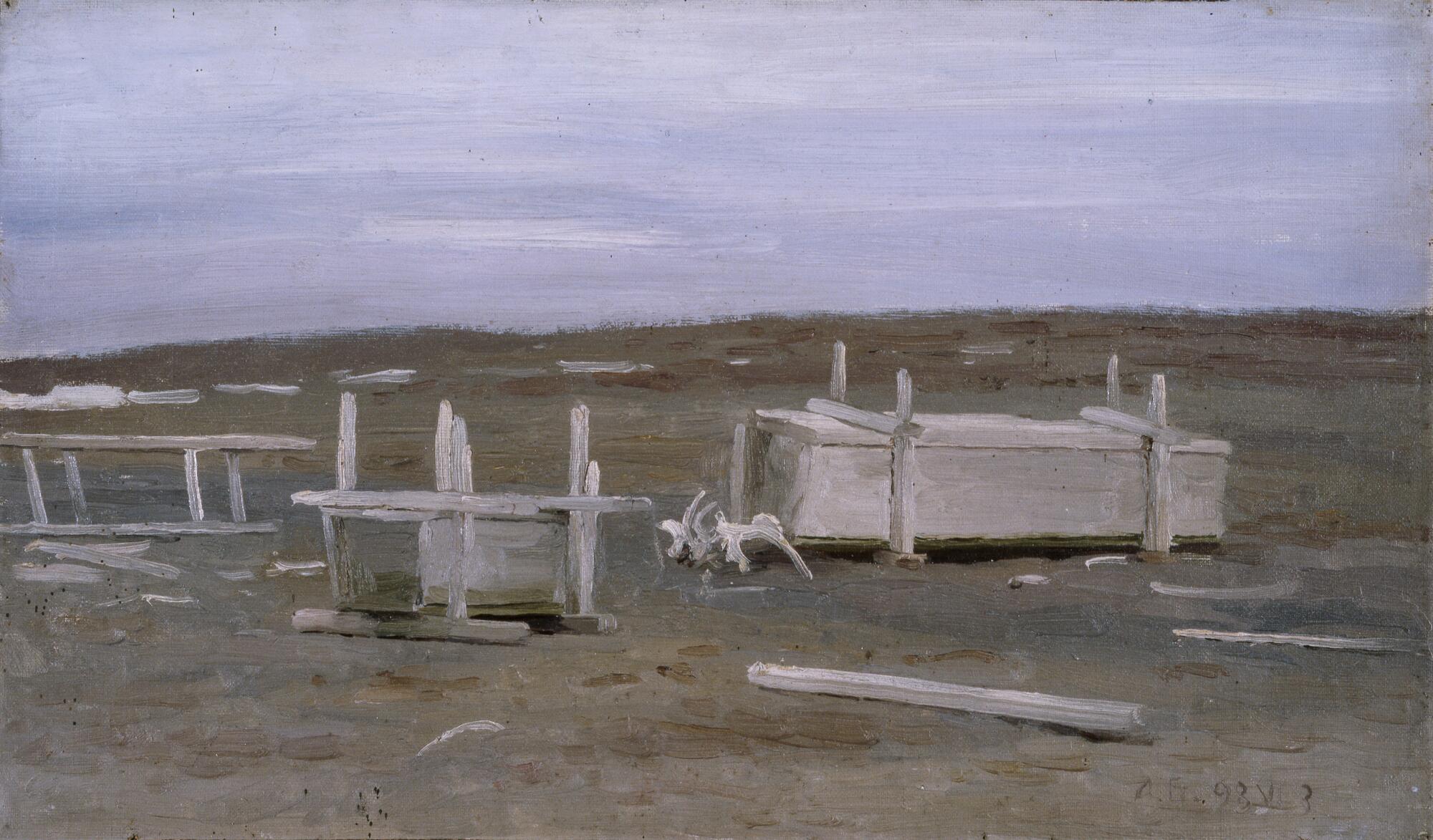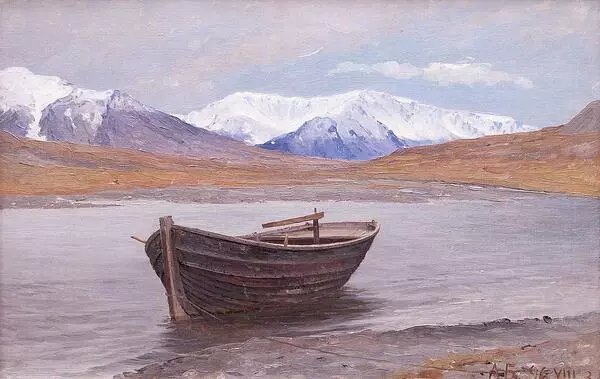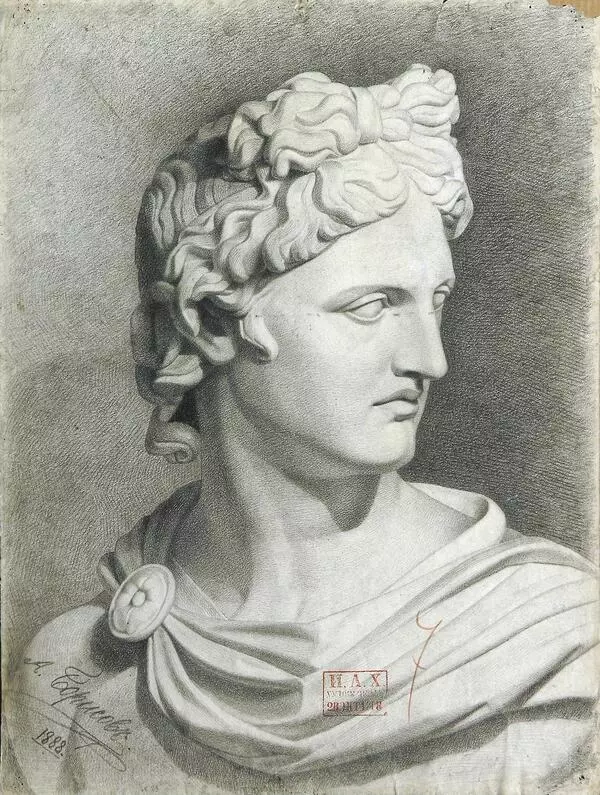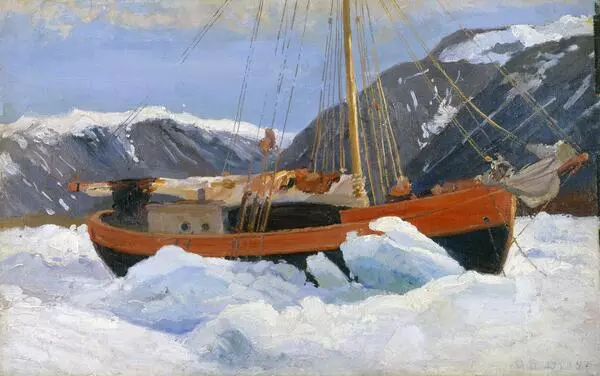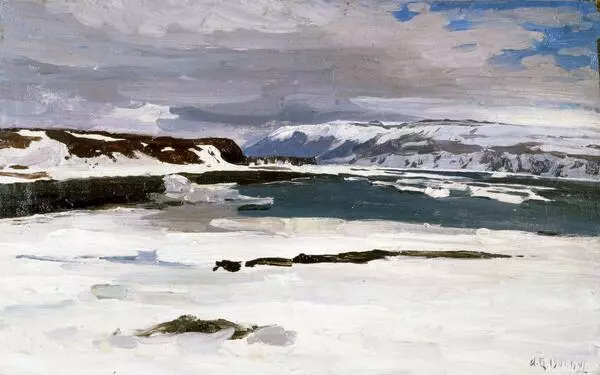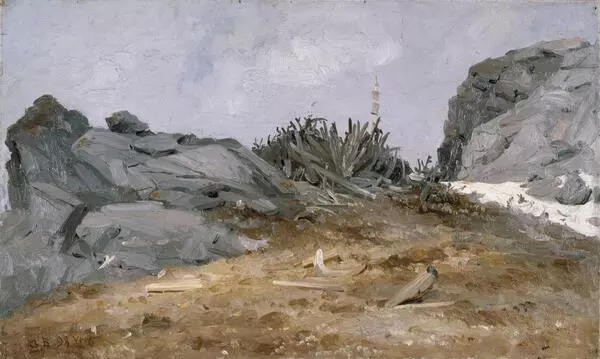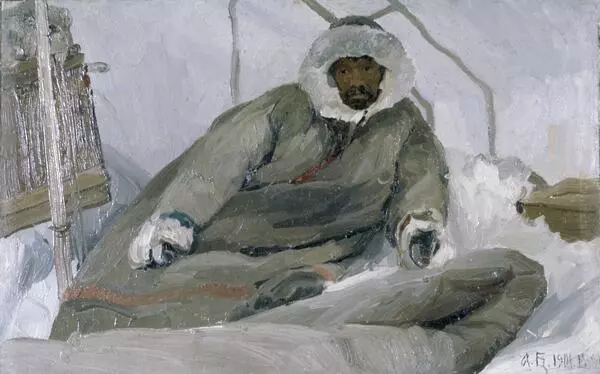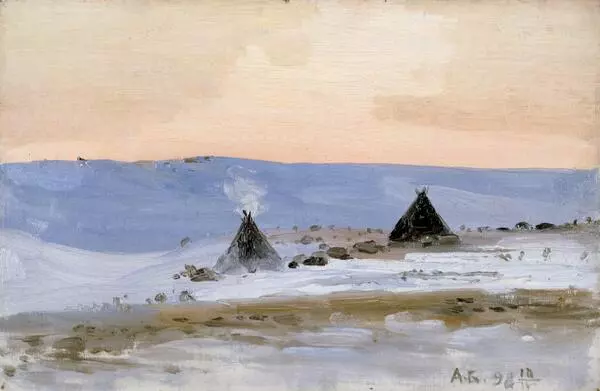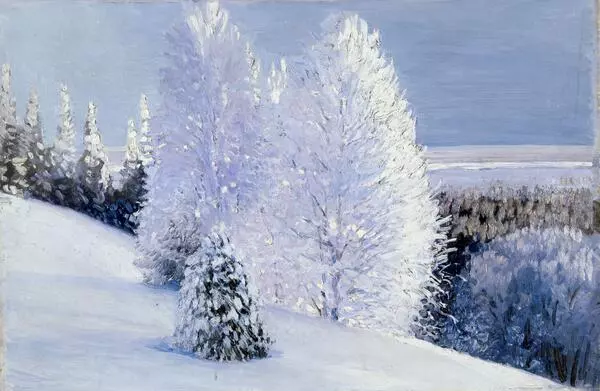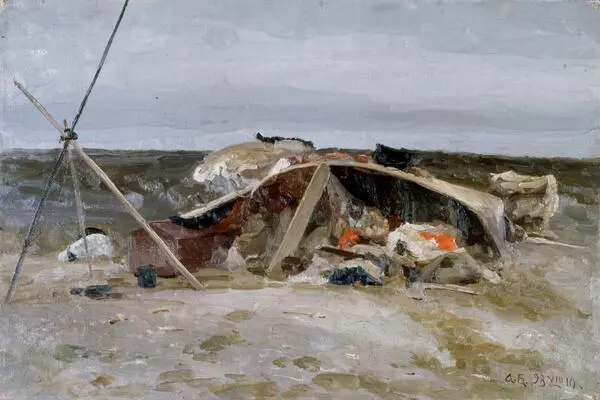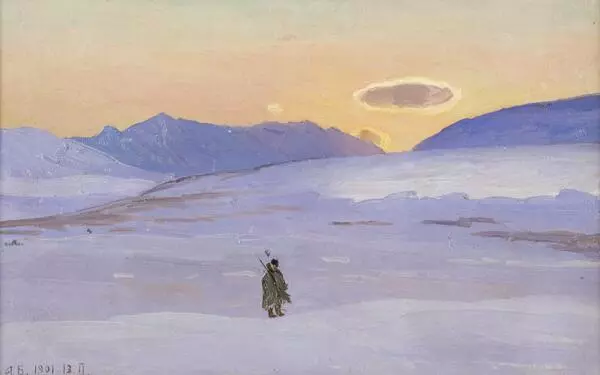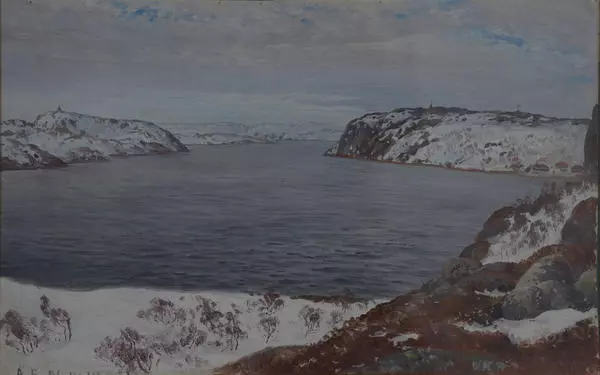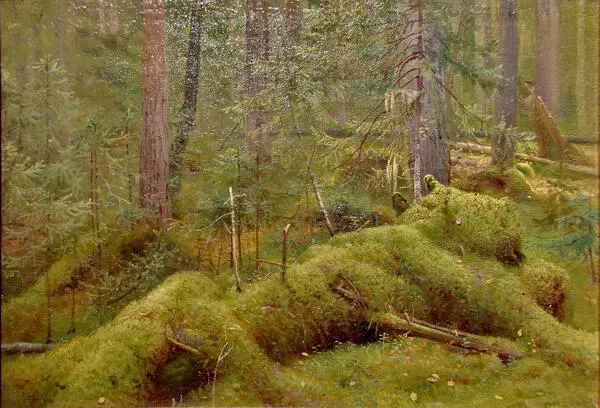This study by Alexander Borisov is interesting not only as a work of art, but also as anthropologic evidence. It shows a desert area on the Vaygach Island that possesses many artifacts of the local culture.
On a gentle hill, there are two coffins of unusual shape. They represent sturdy larch boxes with cross bars. Borisov wrote: ‘The coffins stood on the ground, and near them, there lay a turned-over sled, an axe, a broken runner and three skulls of the reindeer the deceased used for transportation. Also, there was burnt wood: apparently, his family or friends had a funeral feast. I was full of curiosity and decided to peek into the grave. I broke the cross bars off and opened the lid. On the bottom of the larch box, apparently made from driftwood, a corpse lay, wrapped in sackcloth, clothed in malitsa coat and pim boots. Beside the head, there was a wooden cup with something dark in it (apparently rotten blood and meat) and a rusty metal dipper without a handle. Beside the waist, there was an axe and a knife (I suppose, the deceased had been holding them). To the right, there was a little idol. The Samoyed needs all these objects in the afterlife. In the other coffin, there was a child wrapped in a stitched-up cloth. There were no objects. Both corpses were placed with the head to the North, that is, to the grateful sun.’
Some anthropological articles on Nenets culture state that the sled on which the deceased was carried was left on the grave, always upside down, as it was believed that in the afterlife everything is inverted. Sometimes the Nenets broke the right runner of the sled. The position of the sled was north-oriented. In the Nenets culture, the right is associated with the feminine, the North, the native land and the ancestors. So, the position of the sled and the breaking of the right runner was supposed to represent the inverted laws of the land of the dead.
Nenets believe that people die twice. First, they die on Earth. In the afterlife, they live for as long as they lived on Earth and then turn to a spider and die.
On a gentle hill, there are two coffins of unusual shape. They represent sturdy larch boxes with cross bars. Borisov wrote: ‘The coffins stood on the ground, and near them, there lay a turned-over sled, an axe, a broken runner and three skulls of the reindeer the deceased used for transportation. Also, there was burnt wood: apparently, his family or friends had a funeral feast. I was full of curiosity and decided to peek into the grave. I broke the cross bars off and opened the lid. On the bottom of the larch box, apparently made from driftwood, a corpse lay, wrapped in sackcloth, clothed in malitsa coat and pim boots. Beside the head, there was a wooden cup with something dark in it (apparently rotten blood and meat) and a rusty metal dipper without a handle. Beside the waist, there was an axe and a knife (I suppose, the deceased had been holding them). To the right, there was a little idol. The Samoyed needs all these objects in the afterlife. In the other coffin, there was a child wrapped in a stitched-up cloth. There were no objects. Both corpses were placed with the head to the North, that is, to the grateful sun.’
Some anthropological articles on Nenets culture state that the sled on which the deceased was carried was left on the grave, always upside down, as it was believed that in the afterlife everything is inverted. Sometimes the Nenets broke the right runner of the sled. The position of the sled was north-oriented. In the Nenets culture, the right is associated with the feminine, the North, the native land and the ancestors. So, the position of the sled and the breaking of the right runner was supposed to represent the inverted laws of the land of the dead.
Nenets believe that people die twice. First, they die on Earth. In the afterlife, they live for as long as they lived on Earth and then turn to a spider and die.
